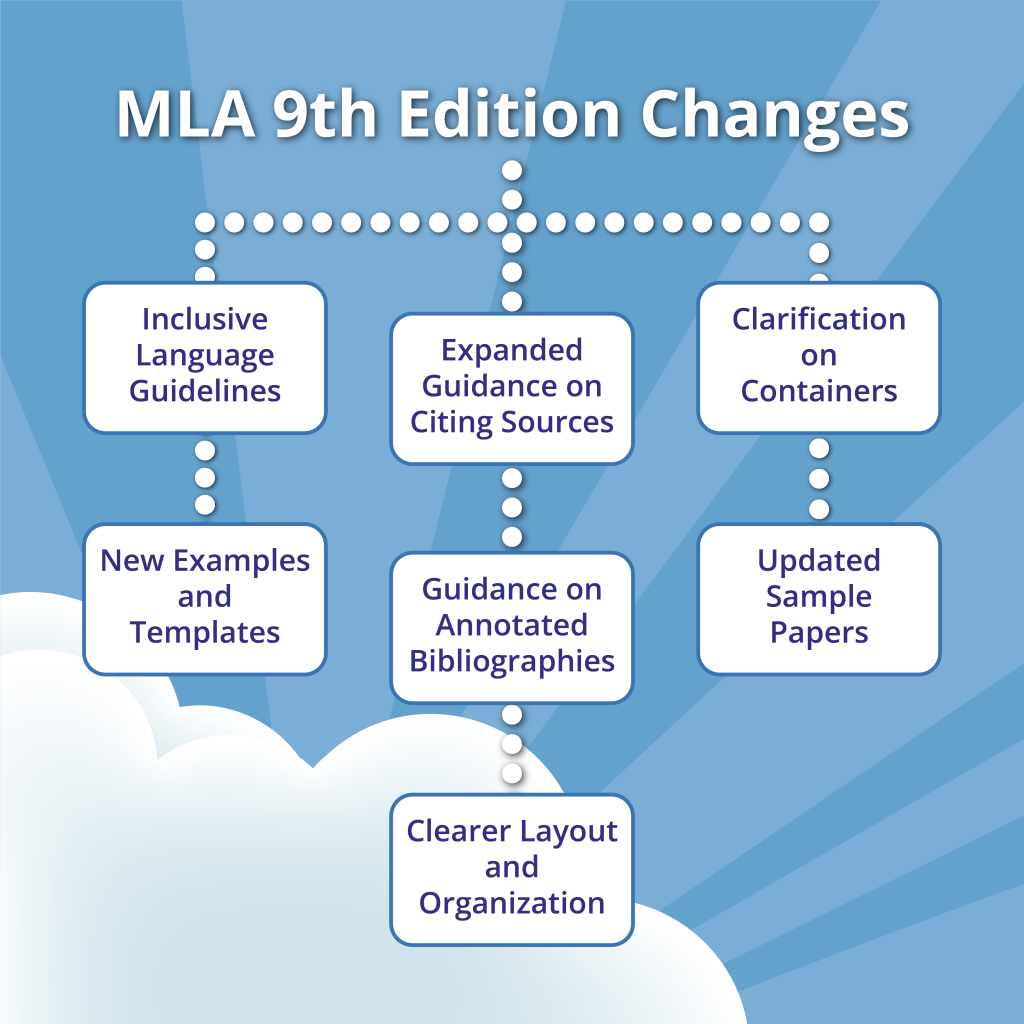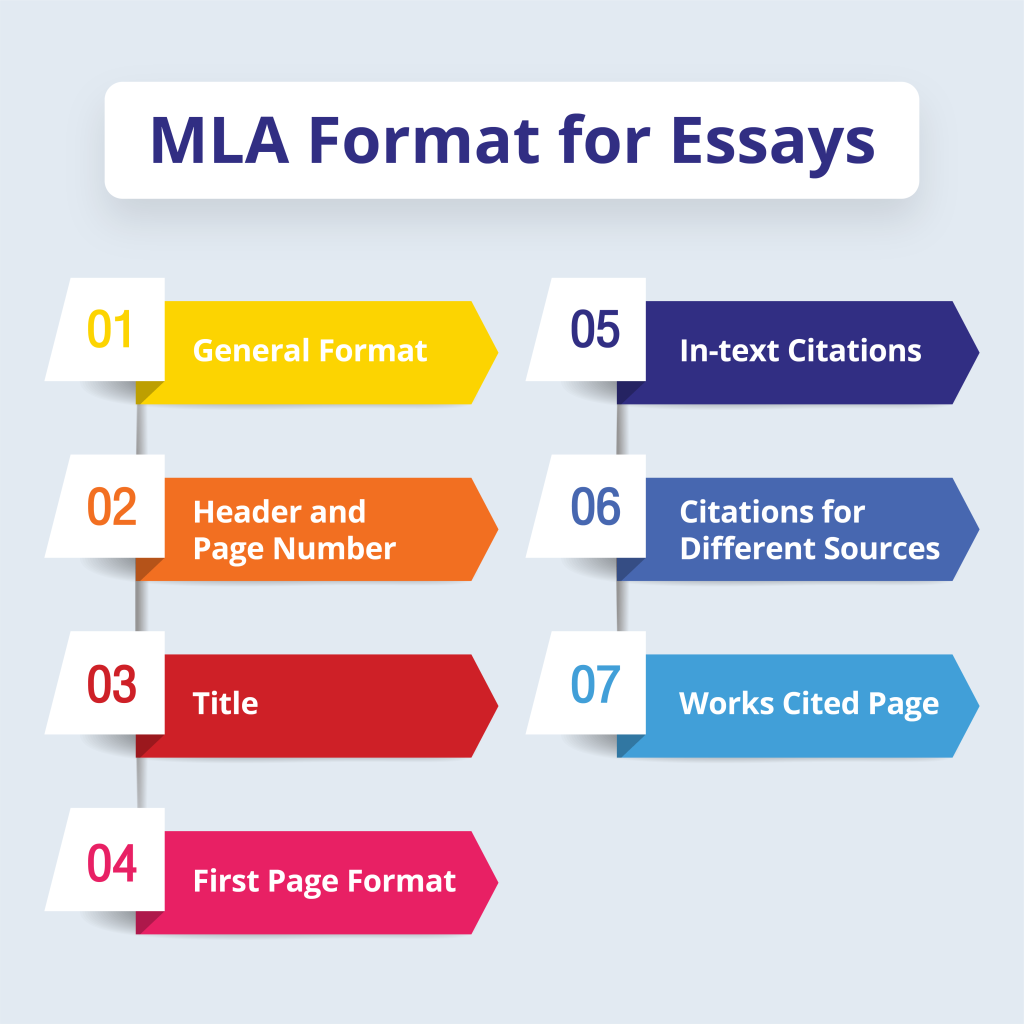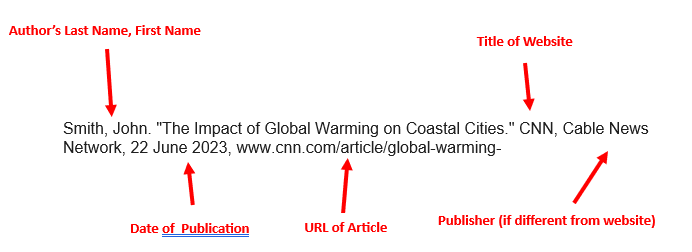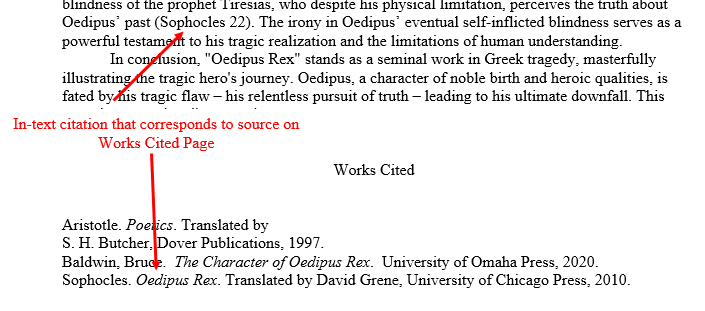Introduction
In academic writing, students are often tasked with adhering to specific formatting styles. One of the most common styles is the Modern Language Association (MLA) format. MLA formatting style is one of the most widely used styles in colleges when it comes to writing and documenting scholarly work, typically in the humanities field. This format is governed by a set of rules and recommendations, which help the writer to create a cohesive, consistent, and structured document that lives up to academic standards.
The following sections of this article provide information on MLA format by discussing all the major ways to use it, including as the Works Cited page, in-text citations, title page, and other components. When students understand and apply these guidelines, they can produce a written text that represents the kind of academic writing expected of them in any setting.
What is MLA Format
MLA format refers to a set of guidelines for writing and formatting research papers and essays. Developed by the Modern Language Association, this style is most commonly used in the humanities, particularly in English studies, literary criticism, and comparative literature. Here are the key features of MLA format:
- General Formatting: Papers are typically typed, double-spaced, with a standard font (e.g., Times New Roman) in 12 pt size. There should be 1-inch margins on all sides of the page.
- Header and Page Numbers: A header is usually included at the top of every page, featuring the writer’s last name and the page number.
- Title and Heading: The paper should have a title, which is centered on the first page above the first line of the essay. No extra space is added before or after the title. A standard heading, consisting of the writer’s name, instructor’s name, course name, and date, should be placed in the upper left corner of the first page.
- In-text Citations: MLA style uses parenthetical citations within the text to reference sources. This usually includes the author’s last name and a page number.
- Works Cited Page: At the end of the paper, a list of references, titled “Works Cited,” is included. This list details all the sources cited in the essay, formatted in a specific way. Each entry should be in alphabetical order by the author’s last name and follow a standard format based on the type of source (book, article, website, etc.).
- Quotations: Short quotations are enclosed in double quotation marks, with the citation following immediately. For longer quotes, an indented block quotation is used without quotation marks.
- Capitalization and Italics: Titles of longer works, like books and films, are typically italicized, while titles of shorter works, like short stories, articles and poems, are placed in quotation marks.
- Spacing and Indentation: The first line of each paragraph should be indented by half an inch. The rest of the document should maintain double spacing.
MLA Latest Version (9th edition) Changes
The latest version of the MLA Handbook is the 9th edition, which was published in April 2021. This edition made several changes to the MLA format in order to assist with modern writing and research approaches. Some of the most significant changes include:
- Inclusive Language Guidelines: The 9th edition places a stronger emphasis on sensitive and inclusive language. It advises writers to be mindful of language that may be biased or discriminatory are urges against language that stereotypes. It gives guidance on how to choose words that are inclusive and respectful to all people.
- Expanded Guidance on Citing Sources: The new edition gives more detailed instructions on how to cite various types of sources, including digital and online media. This is a particularly useful update given the fact that more and more research is done online today using digital resources.
- Clarification on Containers: The concept of “containers” in citations, introduced in the 8th edition, is further clarified. Containers are larger works that hold a cited source, such as a journal that contains an article or a book containing a chapter. The 9th edition offers more examples and clearer guidelines on how to handle these.
- Emphasis on the Purpose of Citation: The latest edition places a greater emphasis on the reason behind citations—which is to credit the original source and to provide a path for readers to find it. This is a shift from focusing primarily on the format details.
- New Examples and Templates: The 9th edition includes updated citation examples and templates, showing the latest types of sources and formats, such as social media posts, websites, webinars, and live performances.
- Guidance on Annotated Bibliographies: There is a section giving new advice on preparing annotated bibliographies, including what information to include and how to format them.
- Updated Sample Papers: The handbook includes new sample papers that demonstrate the MLA format in real-world scenarios, so that one can more easily see how to apply the guidelines in practical writing tasks.
- Clearer Layout and Organization: The new edition is also organized in a way that is meant to be more user-friendly, with clearer headings and a more intuitive structure.

MLA Format for Essays
Here’s a general guide on how to format essays according to the MLA style:
General Format
-
- Type your paper on a computer and print it out on standard, white 8.5 x 11-inch paper.
- Double-space the text of your paper and use a legible font (e.g., Times New Roman). Whatever font you choose, MLA recommends that the regular and italics type styles contrast enough that they are each distinct from one another. The font size should be 12 pt.
- Leave only one space after periods or other punctuation marks (unless your instructor tells you otherwise).
- Set the margins of your document to 1 inch on all sides.
- Indent the first line of each paragraph one half-inch from the left margin. MLA recommends that you use the “Tab” key as opposed to pushing the space bar five times.
Header and Page Number
-
- Create a header that numbers all pages consecutively in the upper right-hand corner, one-half inch from the top and flush with the right margin. (Note: Your instructor may ask that you omit the number on your first page. Always follow your instructor’s guidelines.)
Title
-
- Center the title. Do not underline, italicize, or place your title in quotation marks.
- Write the title in Title Case (standard capitalization), not in all capital letters.
- Use quotation marks and/or italics when referring to other works in your title, just as you would in your text.
First Page Format
-
- In the upper left-hand corner of the first page, list your name, your instructor’s name, the course, and the date. Again, be sure to double-space the text.
- Double-space again and center the title. Do not underline, italicize, or place your title in quotation marks; write the title in Title Case (standard capitalization), not in all capital letters.
- Double-space between the title and the first line of the text.
In-text Citations
-
- Include the author’s last name and the page number(s) from which the quotation or paraphrase is taken in a parenthetical citation after the quote.
- This information should match what you provide in the works cited list at the end of the essay.
Works Cited Page
-
- The list of works cited appears at the end of the paper, after any endnotes. Begin the list on a new page.
- The list should be alphabetized by the author’s last name. If no author is available, alphabetize by the title, ignoring any A, An, or The.
- For each entry in the Works Cited list, use the appropriate MLA format for the type of source being cited (book, article, digital source, etc.).
Citations for Different Sources
-
- MLA provides specific guidelines for different types of sources. For instance, the format for citing a book is different from that for citing a website or journal article.

How to Cite in MLA
Based on the latest version of the MLA Handbook (9th edition), here are guidelines and examples for multiple sources.
Website
-
- General Format: Author’s Last Name, First Name. “Title of the Article or Individual Page.” Title of the Website, Name of the Publisher (if different from the title of the site), Date of Publication, URL.
-
- Example: Johnson, Mary. “Understanding Shakespeare’s Language.” Literature Insights, 22 Mar. 2023, www.literatureinsights.com/understanding-shakespeare.

Book
-
- General Format: Author’s Last Name, First Name. Title of the Book. Publisher, Publication Year.
-
- Example: Smith, John. Exploring the Cosmos. Universe Publishing, 2021.
-
- If the book has multiple authors, list them in the order they appear on the title page, and invert only the first author’s name:
- Example for Multiple Authors: Brown, Laura, and Michael Green. The Art of Gardening. Green Earth Press, 2022.
- If the book has multiple authors, list them in the order they appear on the title page, and invert only the first author’s name:
YouTube Video
-
- General Format: Author’s Last Name, First Name [or Channel Name]. “Title of Video.” YouTube, uploaded by [Uploader Name if different from author], Date of Upload, URL.
-
- Example: Doe, Jane. “10 Quick Tips for Effective Study.” YouTube, uploaded by StudyWithJane, 5 Feb. 2024, www.youtube.com/watch?v=abcd1234.
-
- If the uploader’s name is the same as the channel name, you only need to list it once:
- Example with Same Uploader and Channel Name: StudyWithJane. “10 Quick Tips for Effective Study.” YouTube, 5 Feb. 2024, www.youtube.com/watch?v=abcd1234.
- If the uploader’s name is the same as the channel name, you only need to list it once:
Movie
-
- General Format: Director’s Last Name, First Name, director. Title of the Movie. Contributors, Production Company, Release Year.
-
- Example: Nolan, Christopher, director. Inception. Performance by Leonardo DiCaprio, Warner Bros. Pictures, 2010.
-
- Note: If the focus of your work is on another contributor (like an actor, writer, etc.), start the citation with that person’s name.
Poem
-
-
- If the poem is from a website:
- General Format: Poet’s Last Name, First Name. “Title of the Poem.” Title of the Website, Name of the Publisher (if applicable), Date of Publication, URL.
- If the poem is from a website:
-
-
-
- Example: Frost, Robert. “The Road Not Taken.” Poetry Foundation, poetryfoundation.org/poems/44272/the-road-not-taken.
-
-
- If the poem is from a book:
- General Format: Poet’s Last Name, First Name. “Title of the Poem.” Title of the Book, Publisher, Publication Year, Page Number(s).
- If the poem is from a book:
-
-
- Example: Angelou, Maya. “Still I Rise.” And Still I Rise, Random House, 1978, pp. 32-33.
-
Journal Article
-
- General Format: Author’s Last Name, First Name. “Title of the Article.” Title of the Journal, vol. number, no. number, Year of Publication, pages. Database Name or URL (if accessed online).
-
- Example: Smith, John. “New Approaches in Environmental Studies.” Journal of Ecology, vol. 29, no. 3, 2023, pp. 456-478. JSTOR, www.jstor.org/stable/1234567.
-
- Note: If the journal article does not have a DOI (Digital Object Identifier) and was accessed online, include the URL or the name of the database.
Bible
-
- General Format: Title of the Bible, Version. Editor’s Name (if applicable), Publisher, Publication Year. Note that in-text citations for the Bible usually include the book name, chapter, and verse, but not the author or publication year.
-
- Example: The Holy Bible, King James Version, Oxford UP, 2009.
-
- In-Text Citation Example: (Genesis 2:4)
Textbook
-
- If the textbook has a single author:
- General Format: Author’s Last Name, First Name. Title of the Book. Publisher, Publication Year.
- If the textbook has a single author:
-
-
- Example: Smith, John. Introduction to Molecular Biology. Academic Press, 2020.
-
-
- If the textbook has multiple authors:
- List them in the order they appear on the title page.
- If the textbook has multiple authors:
-
-
- Example: Johnson, Alice, and Michael Brown. Principles of Chemical Engineering. Pearson, 2018.
-
Play
-
- General Format: Playwright’s Last Name, First Name. Title of the Play. Edited by Editor’s Name (if applicable), Publisher, Publication Year. Note that in-text citations should include act, scene, and line numbers (if available) instead of page numbers.
-
- Example: Shakespeare, William. Hamlet. Edited by Barbara Mowat and Paul Werstine, Folger Shakespeare Library, 2008.
-
- In-Text Citation Example: (Shakespeare 3.1.55-57)
View 120,000+ High Quality Essay Examples
Learn-by-example to improve your academic writing
MLA in-text Citations
In-text citations in MLA format are designed to give the reader immediate information about sources without interrupting the flow of the text. These citations usually include the author’s last name and the page number from which the information was taken. Here are some instructions and examples:
- Basic Format:
- The basic format for an in-text citation is: (Author’s Last Name page number).
- Example: (Smith 26)
- Full Sentence Example: “The impact of environmental factors on agricultural productivity has been significantly understated in previous studies” (Smith 26).
- When the Author’s Name is Mentioned in the Sentence:
-
-
- When you mention the author’s name in the sentence, you only need to include the page number in the citation.
- Example: Smith argues that the policy was ineffective (26).
- Or: According to Smith, the implementation of new agricultural techniques has not always led to positive outcomes, indicating that the policy was ineffective in several cases (26).
-
- Work with Two Authors:
- Include both authors’ last names in the citation, separated by “and.”
- Example: (Johnson and Smith 45)
- Or: As Johnson and Smith point out, collaborative efforts in scientific research have led to some of the most groundbreaking discoveries in the field (45).
- Work with Three or More Authors:
- For a work with three or more authors, list the first author’s last name followed by et al.
- Example: (Brown et al. 102)
- Full Sentence Example: Recent research indicates a significant shift in global market trends, suggesting a new phase of economic globalization (Brown et al. 102).
- No Author:
- If the work does not have an author, use the title of the work instead. If the title is long, you can use a shortened version of the title.
- Example: (“Climate Change and Agriculture” 59)
- Full Sentence Example: The report on environmental impacts states, “The acceleration of climate change has had a profound effect on global agricultural patterns” (“Climate Change and Agriculture” 59).
- Multiple Works by the Same Author:
- If you are citing more than one work by the same author, include a shortened title for the particular work from which you are quoting to distinguish it from the others.
- Example: (Smith, “Understanding Economics” 82)
- Full Sentence Example: Smith’s analysis of contemporary economics presents a contrasting perspective to his earlier work, noting that “the current economic policies have not adapted to the rapid technological advances” (Smith, “Understanding Economics” 82).
- Direct Quotes:
- When you quote directly from a source, include the page number in the citation.
- Example: Smith states, “The economic model was flawed at its core” (26).
- Or: In discussing the limitations of the current economic framework, Smith argues that “the economic model was flawed at its core” (26), highlighting the need for a more robust approach to economic analysis.
- Citing a Source with No Page Numbers:
- When citing sources such as websites without page numbers, only include the author’s name in the citation. If the author’s name is not available, use the title.
- Example: (Johnson)
- Full Sentence Example with Author’s Name: Johnson’s analysis of online learning trends provides valuable insights into the evolving nature of education in the digital age (Johnson).
- Full Sentence Example with No Author: Acknowledging new technologies in addressing climate change helps in presenting an optimistic view of future advancements (“Innovations in Renewable Energy”).
Remember, the purpose of in-text citations is to direct the reader to the corresponding entry in the Works Cited page. This makes it easy for readers to find the source if they want to explore it further.

MLA Example Essay
John Smith
Dr. Jane Doe
English Literature 101
24 January 2024
The Tragic Hero in Sophocles’ “Oedipus Rex”
In Sophocles’ play “Oedipus Rex,” the protagonist, Oedipus, represents the quintessential tragic hero, a concept that is explored in Aristotle’s “Poetics.” As Aristotle points out, the tragedy of Oedipus lies in his relentless quest for truth, which ultimately leads to his downfall, exemplifying the Greek notion of hubris (12). Oedipus’ journey from ignorance to knowledge, coupled with his tragic fate, offers an insightful reflection on the human condition and the maxim pride goes before the fall.
According to Baldwin, “Sophocles masterfully crafts Oedipus as a character of noble stature,” (4) who is initially viewed as the savior of Thebes for solving the riddle of the Sphinx. This portrayal aligns with Aristotle’s definition of a tragic hero, who is “not eminently good and just, yet whose misfortune is brought about not by vice or depravity, but by some error or frailty” (Aristotle 13). Oedipus is revered and respected, setting the stage for the subsequent reversal of his fortune. His discovery of the truth—that he has unwittingly killed his father, Laius, and married his mother, Jocasta—echoes Aristotle’s notion of ‘anagnorisis,’ a moment of critical discovery (Aristotle 11).
The theme of sight and blindness runs throughout the play, symbolizing the contrast between knowledge and ignorance. Oedipus, though physically sighted, remains blind to his true identity and fate until the climax. This metaphorical blindness is juxtaposed with the literal blindness of the prophet Tiresias, who despite his physical limitation, perceives the truth about Oedipus’ past (Sophocles 22). The irony in Oedipus’ eventual self-inflicted blindness serves as a powerful testament to his tragic realization and the limitations of human understanding.
In conclusion, “Oedipus Rex” stands as a seminal work in Greek tragedy, masterfully illustrating the tragic hero’s journey. Oedipus, a character of noble birth and heroic qualities, is fated by his tragic flaw – his relentless pursuit of truth – leading to his ultimate downfall. This narrative not only adheres to the Aristotelian definition of tragedy but also offers timeless insights into the human experience, particularly the pursuit of knowledge and the acceptance of one’s fate.
Works Cited
Aristotle. Poetics. Translated by S. H. Butcher, Dover Publications, 1997.
Baldwin, Bruce. The Character of Oedipus Rex. University of Omaha Press, 2020.
Sophocles. Oedipus Rex. Translated by David Grene, University of Chicago Press, 2010.
Key Points to Remember
MLA Works Cited & MLA Bibliography
In MLA style, the list of all the sources cited in your text is titled ‘Works Cited.’ This list appears at the end of your paper, providing full details of every source you cited. Each entry should include key elements like the author’s name, the title of the source, publication date, and other publication details. MLA does not use the term ‘bibliography.’ Therefore, there are no guidelines or recommendations for an MLA Bibliography. The Turabian, or Chicago style, uses Bibliography. In the MLA style, ‘Works Cited’ is the preferred term. The MLA Works Cite page should be alphabetically ordered by the authors’ last names, or by the title if the work is anonymous. It’s important for ensuring academic integrity and avoiding plagiarism.
MLA Format Example
An MLA formatted paper typically includes a header with the page number and the author’s last name, double-spaced text, and 1-inch margins on all sides. Citations within the text (in-text citations) should include the author’s last name and page number. For instance, an in-text citation might look like this: (Smith 123). The ‘Works Cited’ page at the end of the document lists all references in a specific format, depending on the type of source (e.g., book, article, website).
MLA In-Text Citation
MLA in-text citations are brief references in your text that indicate the source of your quotations, paraphrases, or summaries. They are included in the body of your work, and they correspond with the full references listed on the ‘Works Cited’ page. An in-text citation in MLA format usually contains the author’s last name and the page number from where the information was sourced, enclosed in parentheses. For example, if you are citing a quote from page 45 of a book written by John Smith, the in-text citation would look like this: (Smith 45).
MLA Title Page
Unlike some other formatting styles, MLA does not require a separate title page for most student papers. Instead, the title and other information are placed on the first page of your document. The upper-left corner should include your name, your instructor’s name, the course name, and the date. The title of the paper, centered and not bolded, italicized, or underlined, follows after a double space. The text of your paper begins on the same page, following another double space below the title.
MLA Heading Format
In MLA format, the heading is placed in the upper left corner of the first page of your paper. It includes four key pieces of information:
-
- Your Name
- Your Instructor’s Name
- The Course Title
- The Date (in day-month-year format)
Here’s an example of an MLA heading:
John Smith
Dr. Jane Doe
English Literature 101
24 January 2024
After the heading, double-space and center the title of your paper. The body of your essay starts on the same page, double-spaced, following the title.

MLA Annotated Bibliography
An annotated bibliography in MLA format includes the standard citation of a source followed by a short annotation. This annotation is a brief summary and/or evaluation of the source. Each entry in an annotated bibliography consists of two parts: the MLA citation and the annotation.
Here’s an example:
Smith, John. Understanding Shakespeare. Oxford University Press, 2022.
This book provides an in-depth analysis of William Shakespeare’s works. Smith offers a detailed examination of Shakespeare’s use of language, themes, and character development. The author’s perspective is particularly valuable for understanding the historical context of Shakespeare’s plays. This source will be useful for my research on Shakespeare’s influence on modern literature.
The annotation is typically about 150 words, and it can include a summary, assessment, and reflection on how the source will be used in your research.
MLA Block Quote
Block quotes in MLA are used for direct quotations that are longer than four lines of prose or three lines of verse. The quote is set off from the text and indented one inch from the left margin. No quotation marks are used, and the parenthetical citation comes after the ending punctuation of the quote.
Example:
In her book, Smith discusses the impact of Shakespeare:
Shakespeare’s influence on literature cannot be overstated. His unique style and powerful command of language have shaped the course of English literature. His plays and poems have continued to resonate with audiences and readers for centuries, offering insights into human nature and the wonderful aspects of human society, from its heights to its horrors and all in between. (Smith 123)
Note that the parenthetical citation is outside of the punctuation of the quote.
MLA Format Date
In MLA format, the presentation of the date follows a specific style. Dates in MLA are written in the day-month-year format without commas. This format is used in the header of your paper, where you list your name, your instructor’s name, the course name, and the due date of the paper. Here’s an example:
- 24 January 2024
MLA Citation Generator
When it comes to creating citations in MLA format, there are various tools available online. One such tool is the MLA citation generator provided by PaperDue, which you can access at PaperDue’s Citation Generator. This tool can help you automatically format your references according to the MLA guidelines. It’s a convenient way to ensure that your citations are correct and consistent, saving you time and helping you avoid errors in your Works Cited page.
Conclusion
In conclusion, knowing and using MLA format is an important skill for students learning to do academic writing within the humanities. All the components of this format are important, from structuring the heading and title page to creating accurate in-text citations and a good Works Cited page. MLA guidelines can help you as a writer produce work that is clear, credible, appropriately referenced, and readable as a scholarly work. Plus, the use of tools like MLA citation generators can further help you along so that your final product is perfectly presentable in any academic setting.





